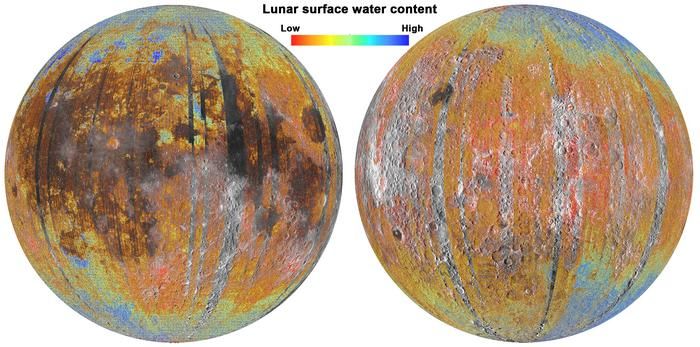High-energy electrons in Earth's magnetic tail may form water on the moon
By Robert Lea published 1 day ago
The discovery could help scientists better understand where water is on the lunar surface, knowledge that could be used in future crewed moon missions.

A water content map of this valuable life-sustaining commodity across the moon. (Image credit: Li, et al., 2023)
High-energy electrons located in a tail of plasma around the Earth are weathering the moon and, more excitingly, seem to have given rise to water across the lunar surface.
The new findings, reached by a team of researchers led by Shuai Li, a scientist at the University of Hawaii at Mānoa School of Ocean and Earth Science and Technology, could also explain how water gathers in pockets across the moon that never see sunlight called permanently shaded regions (PSRs).
Knowledge of water distribution and concentration across the moon isn’t only essential for understanding how Earth's natural satellite has evolved, but it's also important for planning future prolonged crewed missions to the moon. Water could be harvested by those space explorers not just as sustenance, but also to generate fuel that can be used for staging missions from the lunar surface. These missions could use the moon as a stepping stone for exploration deeper into the solar system, including on Mars.
Li and team’s theory connects water on the moon to the magnetic bubble that surrounds the Earth called the magnetosphere. The magnetosphere shields our planet from high-energy charged particles delivered from the sun in the solar wind.
More:
https://www.space.com/water-moon-electrons-earth-bombardment
